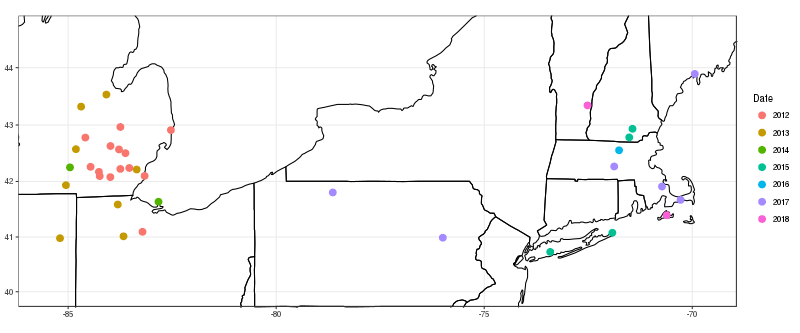My Logbooks
Recently a friend asked me about what I use for my pilot logbook. This made me realize that my logging is complicated and that I should probably make a blahg entry about it.
All in all, I have three logbooks to keep track of my flying.
Good ol’ paper logbook
This is the “official” one. In other words, if the FAA wants to see my logbook, that’s what I’ll show them. There’s not much more to say about it.
ForeFlight
This is my casual logbook. A while back I entered everything in, including more accurate counts (full stop vs. touch+go) and better divided up time counts (PIC vs. solo). I use this logbook to answer questions like “How much time do I have?” and “Am I current?”. It is also useful when chatting with people and I want to dig up an entry.
I also use it to keep track of  Hobbs vs.
Hobbs vs.  tach time since I pay based on tach time.
tach time since I pay based on tach time.
A Repository
This is my custom analysis and archive logbook. In this Mercurial repository, I keep a giant JSON file with every entry with even more detail than what’s in ForeFlight.
Alongside it, I also keep a list of latitude/longitude/altitude information for each airport I’ve been to.
From these two files, I can generate various plots. For example, here is one:

This is a plot of all the airports I’ve ever landed at—color coded based on the year of my first landing there.
This repository also serves as a backup of my paper logbook (in case my physical logbook burns up, gets water damaged, etc.) and an archive of other flying related data. I accomplish this by keeping scans of the paper logbook, copies of any GPS tracklogs I’ve recorded, and so on in a couple of subdirectories.
Post-flight
At the end of each flight, I add an entry to my ForeFlight logbook. Usually, I have ForeFlight recording a tracklog, so a large part of the entry is auto-generated. The bits of info that I add manually are:
- tach time (useful for billing)
- time out/off/on/in (I’m trying to figure out how much time I “waste” on the ground to improve my planning accuracy)
- landing counts
- any remarks I wouldn’t remember later
Then, when I’m home and have time (this can be later that day, or 3 days later), I pull up the ForeFlight entry, improve/edit the remarks, double check that all the counts make sense (if needed I pull up the tracklog to recount the number of landings, etc.), and then write an entry into my paper logbook.
If I filled up a page of the paper logbook, I scan the two pages and drop them into the repository.
Depending on how I feel, I may update the repository logbook JSON file then and there or at some point later (in the past I’ve even waited for a month due to laziness). Usually, visiting a new airport is motivating enough.